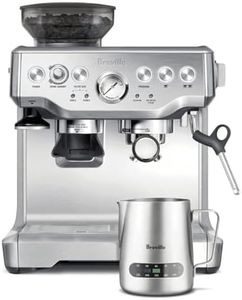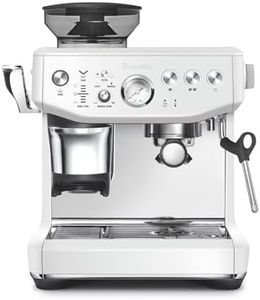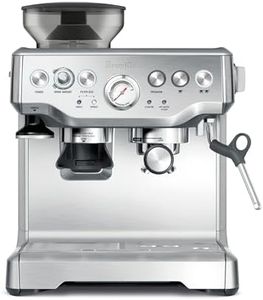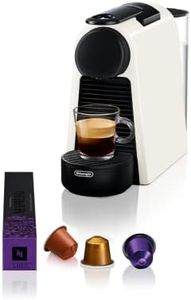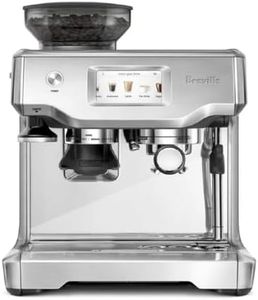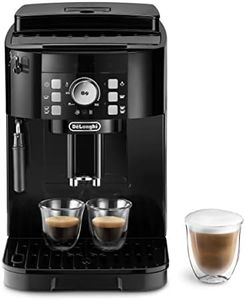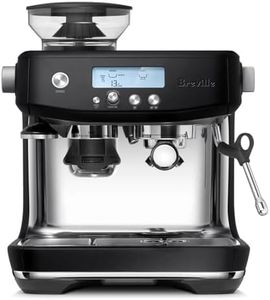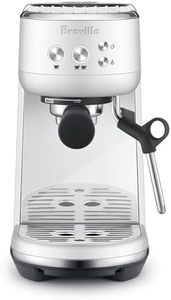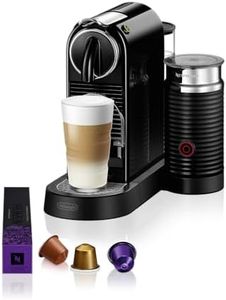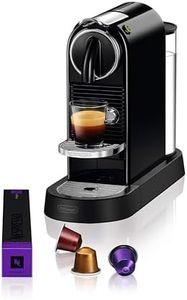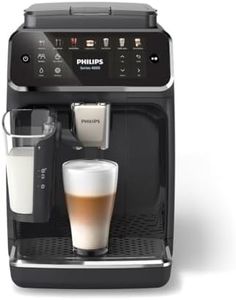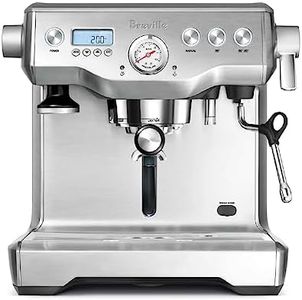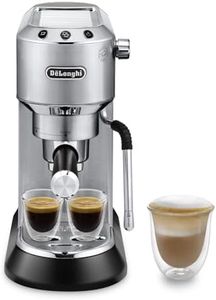We Use CookiesWe use cookies to enhance the security, performance,
functionality and for analytical and promotional activities. By continuing to browse this site you
are agreeing to our privacy policy
10 Best Espresso Makers
From leading brands and best sellers available on the web.Buying Guide for the Best Espresso Makers
Choosing an espresso maker can feel overwhelming with the variety of features and types available. The best way to start is by thinking about how you like your coffee, how involved you want to be in the brewing process, and how much space you have in your kitchen. Understanding key specifications will help you narrow down the options and find a machine that matches your needs and lifestyle. Always check how easy the machine is to use and clean, as this will impact your everyday enjoyment.Type of Espresso MakerEspresso makers come in different types, such as manual, semi-automatic, automatic, and super-automatic. Manual machines give you the most control but require more skill and effort, making them great for enthusiasts. Semi-automatic and automatic machines strike a balance between control and convenience and are suitable for most people. Super-automatic machines handle almost everything with the press of a button, perfect if you want a quick and easy cup. Think about how hands-on you want to be when making espresso to choose the right type.
Pressure (Bar Rating)Pressure, measured in bars, refers to how forcefully the water is pushed through the coffee grounds. Most quality espresso machines operate at around 9 bars, although some advertise as high as 15 bars or more. More pressure doesn't always mean better coffee—9 bars is typically ideal for extracting a rich and balanced espresso. If you see much lower pressures, the machine may not deliver a true espresso experience, while much higher pressures generally don't improve the result.
Boiler TypeThe boiler heats the water in the espresso maker, with common options being single, dual, or heat exchange boilers. Single boilers mean you have to wait between making coffee and steaming milk, which can slow you down if you make a lot of milk drinks. Dual or heat exchange boilers let you brew and steam at the same time for a smoother workflow. If you mostly drink plain espresso, a single boiler is fine. If you enjoy lattes or cappuccinos often, look for a dual or heat exchange boiler.
Milk Frothing SystemIf you like milk-based drinks such as cappuccinos or lattes, you'll want to consider how the espresso maker steams or froths milk. Some machines come with a manual steam wand, which gives you the best control but requires some practice. Others have automatic frothers, which are easier but allow less customization. Think about your taste for milk drinks and how much effort you're willing to put into frothing milk when assessing this feature.
Water Tank CapacityThe water tank capacity determines how many cups you can make before needing a refill. Smaller tanks are fine for occasional use or single-person households, while larger tanks are convenient if you drink a lot of coffee or have several people using the machine. To avoid frequent refills, estimate how many espressos you make in a day and choose a capacity that matches your routine.
Ease of CleaningEspresso makers need regular cleaning to stay in good condition and deliver tasty coffee. Some have removable parts and clear instructions, making cleaning simple. Others may require more effort or special tools. If you prefer low-maintenance gadgets, look for a machine with easy access to the water tank, drip tray, and brew group, as well as features like automatic cleaning cycles.
Size and FootprintEspresso makers can vary a lot in size, from compact designs to large, professional-style machines. It's important to measure your available counter space and consider where the machine will be placed. Think about whether you'll need to move the machine around or fit it under cabinets—choosing the right size ensures it will be convenient and comfortable to use.
